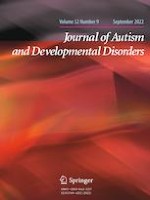08-09-2021 | Original Paper
The Impact of Birth Order on Language Development in Autistic Children from Simplex Families
Gepubliceerd in: Journal of Autism and Developmental Disorders | Uitgave 9/2022
Log in om toegang te krijgenAbstract
The current study investigated the impact of birth order on vocabulary and social language development in 1338 first-born and 1049 s-born autistic youth (M age = 9.03 years, SD = 3.57; 86.4% male) from the Simons Simplex Collection. Frequentist and Bayesian analyses revealed mixed findings in language development. There were no differences in vocabulary or social language between first-born and second-born children. However, birth order and income together predicted expressive vocabulary and inappropriate speech such that birth order had a greater impact on language in lower-income families. This is the first study to investigate the impact of birth order on language outcomes in autistic youth and has implications for early intervention in lower-resourced communities.
